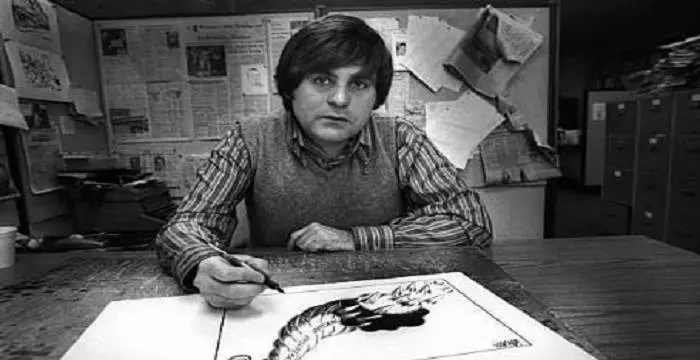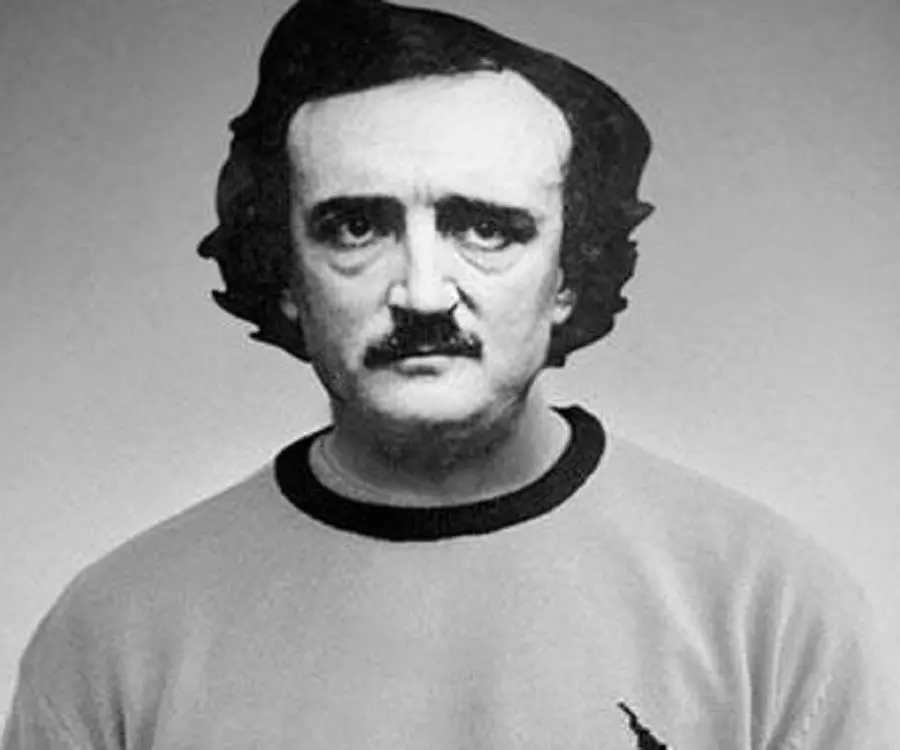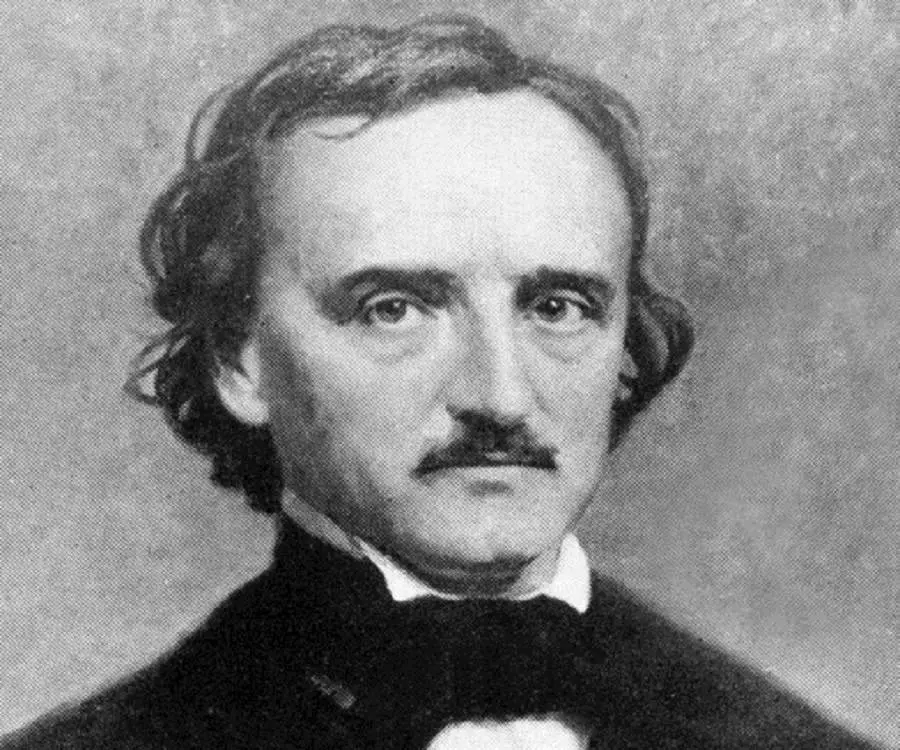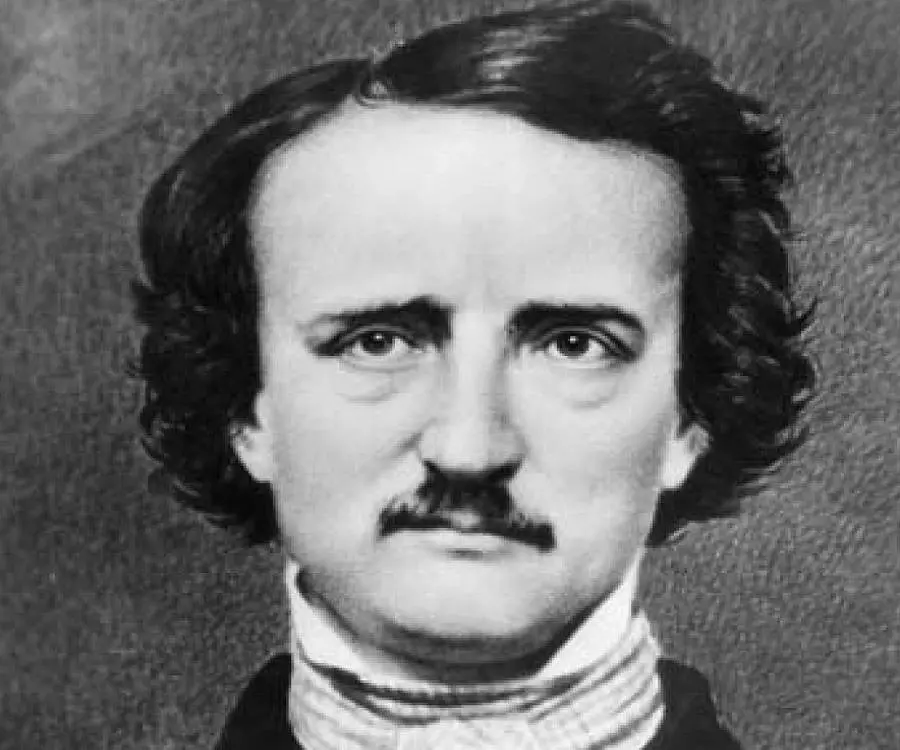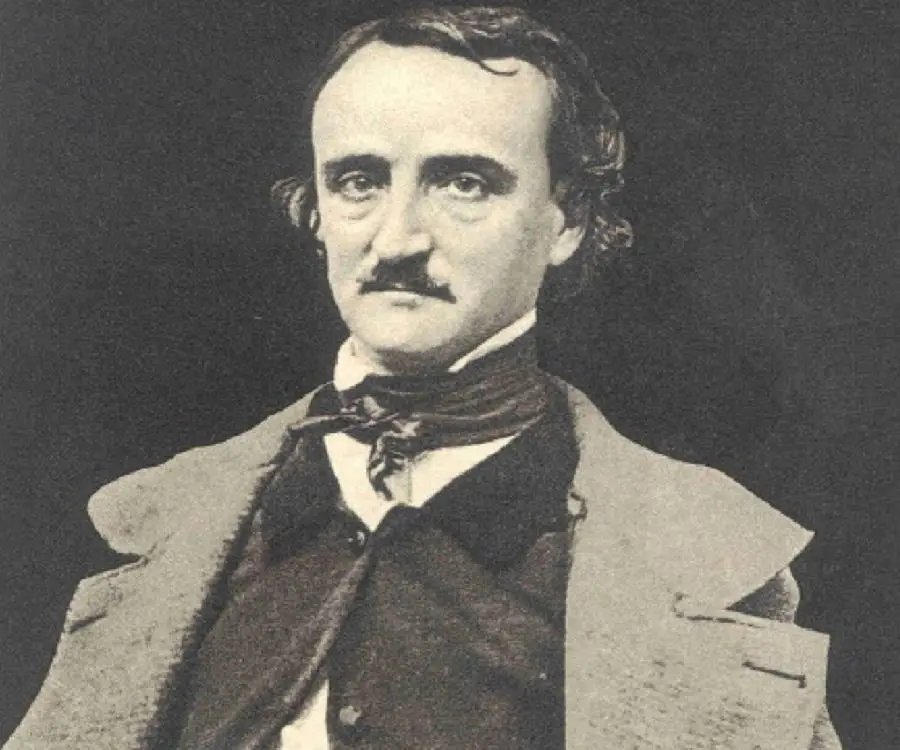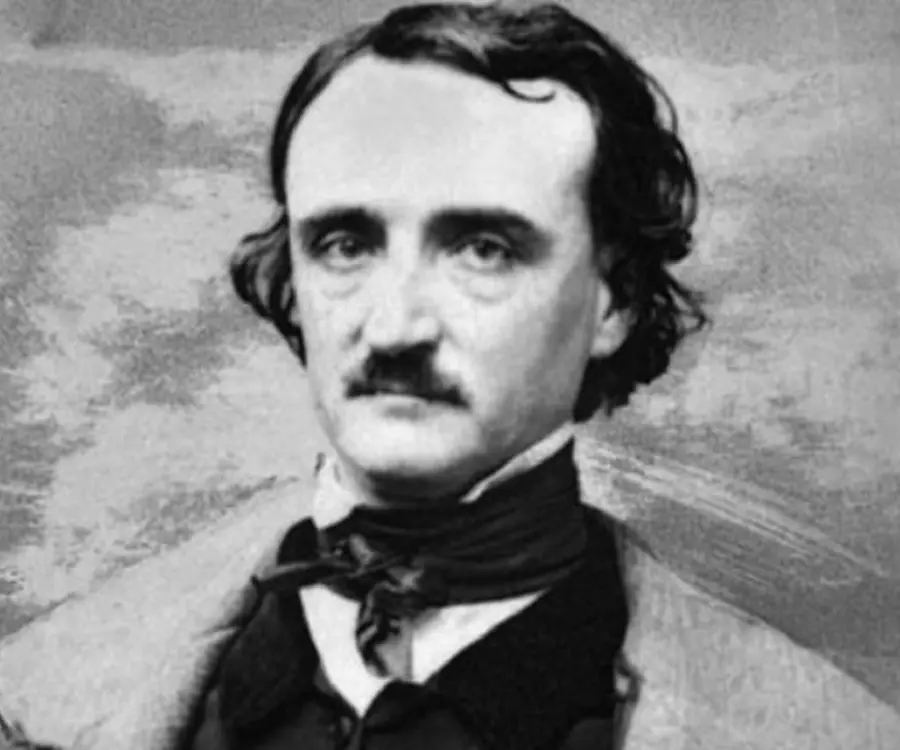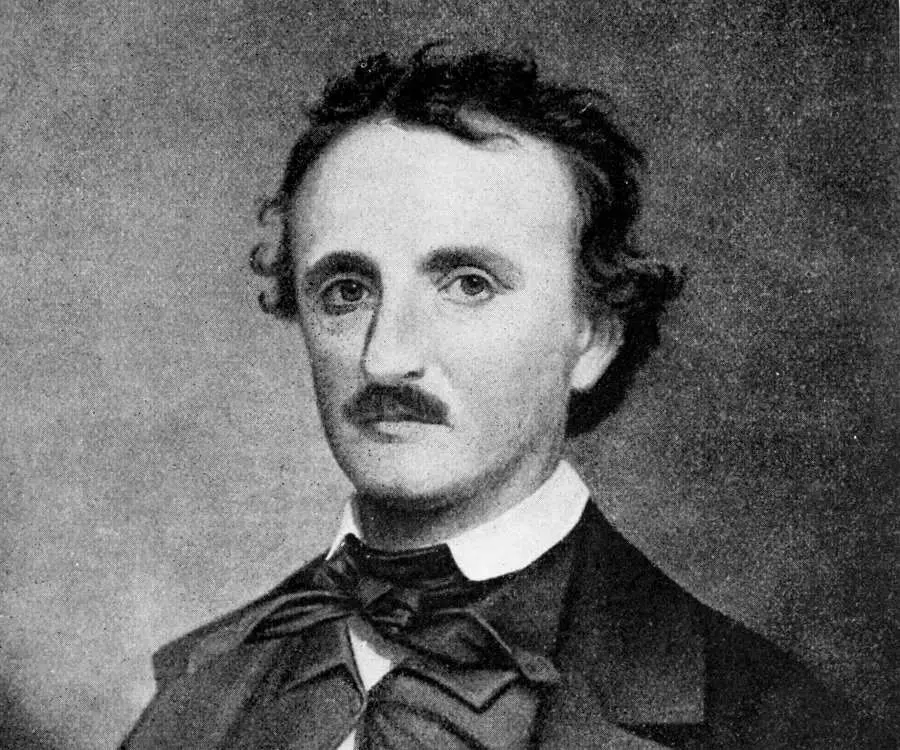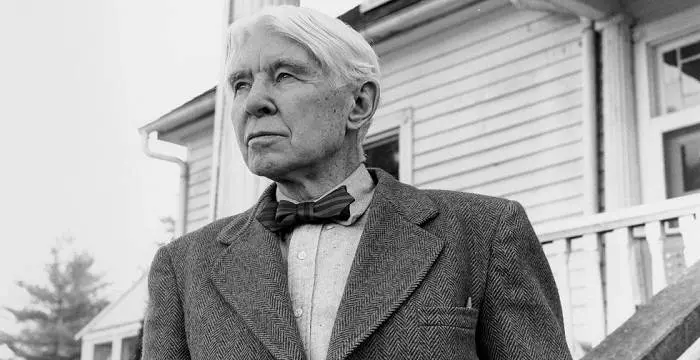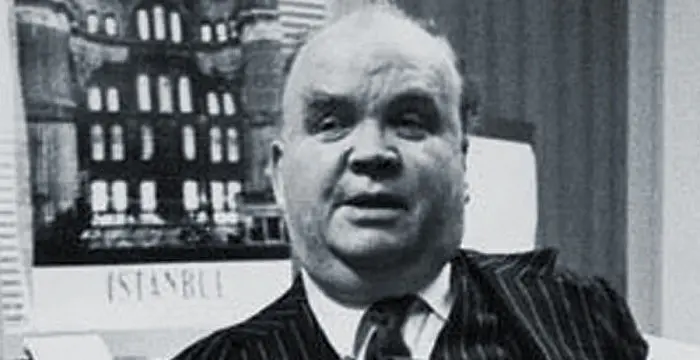
Edgar Allan Poe - Editors, Timeline and Family
Edgar Allan Poe's Personal Details
Edgar Allan Poe was an American author, poet, editor and literary critic, who was also associated with the American Romantic Movement
| Information | Detail |
|---|---|
| Birthday | January 19, 1809 |
| Died on | October 7, 1849 |
| Nationality | American |
| Famous | Writers, Poets, Short Story Writers, Author, Editors, Literary Critic |
| City/State | Massachusetts |
| Spouses | Virginia Eliza Clemm Poe |
| Siblings | Rosalie Poe, William Henry Leonard Poe |
| Universities |
|
| Discoveries / Inventions |
|
| Cause of death |
|
| Birth Place | Boston, Massachusetts, United States |
| Gender | Male |
| Father | David Poe, Jr |
| Mother | Elizabeth Arnold Hopkins Poe |
| Sun Sign | Capricorn |
| Born in | Boston, Massachusetts, United States |
| Famous as | Author, Poet, Editor and Literary Critic |
| Died at Age | 40 |
// Famous Author
Joyce Meyer
Joyce Meyer is a Christian author and speaker. This biography provides detailed information about her childhood, life, achievements, works & timeline
Suze Orman
Suze Orman is an American television host, financial advisor, author and motivational speaker, famous for her ‘The Suze Orman Show’ on CNBC. This biography profiles her childhood, life, career, works, achievements and timeline.
Robert Graysmith
Robert Graysmith is an author best identified for his works on the ‘Zodiac Killer case’. Check out this biography to know about his childhood, family life, achievements and fun facts about him.
Edgar Allan Poe's photo
Who is Edgar Allan Poe?
Edgar Allan Poe was an American writer, poet, editor and literary critic, who was also associated with the American Romantic Movement. He is better known for his tales of mystery and macabre. He was amongst the earliest American practitioners of short story and was generally considered as the inventor of the detective-fiction genre. Poe is also credited for his contribution in the emerging genre of science fiction. His works greatly influenced American literature and also other specialized fields like, cosmology and cryptography. His best known fiction works were generally Gothic and dealt with themes like the effects of decomposition, concerns of premature burial, the reanimation of the dead, and mourning. Poe’s works are also considered as the part of dark romanticism genre. He became famous for his popular poems like, ‘The Raven’ and “Annabel Lee”.
// Famous Editors
Carl Sandburg
Carl Sandburg was a famous multiple Pulitzer Prize winner writer and poet. Read more about the life and the works of this prolific writer in the following article.
Nikolai Rimsky-Korsakov
Coming from a army background, Nikolai Rimsky Korsakov stunned the world with his penchant and flair for music. Read on to know more about his profilr, childhood, life and timeline in this biography.
Morgan Macgregor
Morgan Macgregor is a Canadian writer who is married to actor Michael C. Hall. Check out this biography to know about her birthday, childhood, family life, achievements and fun facts about her.
Childhood & Early Life
Edgar Allan Poe was born on January 19, 1809, as Edgar Poe in Boston, Massachusetts. At the time of his birth, both his parents were struggling actors, attached to a repertory company in Boston.
Edgar’s father, David Poe Jr., abandoned his career in law to become an actor; but was not very successful in that, possibly due to stage-fright. Contrarily, his mother, Elizabeth Arnold Hopkins Poe, was an accomplished actress, praised for acting ability as well as for her melodious voice and attractive figure.
Edgar, the second of his parents’ three children, was born while his parents were living in a boarding house near Boston Commons. He had an elder brother called William Henry Leonard Poe, often referred to as Henry Poe and a younger sister called Rosalie.
In the summer of 1809, few months after Edgar’s birth in Boston, the family relocated to New York. Very shortly, short-tempered and alcoholic, David Poe abandoned his family, never to return. Eliza, at that time pregnant with Rosalie, was left alone to take care of their two sons.
Alone in New York, struggling to make the ends meet, Eliza developed tuberculosis and died from it on December 8, 1811, leaving her three children orphaned. It is believed David Poe died in Norfolk on December 11, 1811, three days after his wife’s death.
After their mother’s death, the three siblings were separated. While their parental grandparents took up the responsibility of William Henry, Rosalie was adopted by William and Jane Scott Mackenzie and Edgar went to live with his godfather, John Allan, and his wife, Frances Valentine Allan.
John Allan was a successful businessperson from Scotland, at that time based in Richmond, Virginia. Although they did not have children they did not formally adopt Edgar. However, they gave him their name, calling him Edgar Allan Poe, alternately spoiling and disciplining him.
In 1815, the Allans went for a visit to Great Britain. While the family lived in London, Edgar was sent for a short period to Irvine, Scotland, where John Allan was born. Here, he studied at a grammar school.
In 1816, he was brought back to London only to be sent to a boarding house at Chelsea. Later from 1817, he studied at Manor House School at Stoke Newington, finally returning to Richmond in 1820. It is not known where he studied thereafter.
As he grew older, John Allan tried to initiate his foster son into the family business; but verses, scrawled in Edgar’s adolescent handwriting on the back of company’s ledgers, show he was not very successful in that. Edgar had already decided to emulate his childhood hero, Lord Byron—the famous British poet.
In 1826, Edgar entered the newly founded University of Virginia at Charlottesville. Although he did well academically he started gambling to raise money for his upkeep and very soon accumulated a huge debt. Since John Allan refused pay up, Edgar left the university in March 1827 and returned home.
Military Service
On his return to Richmond, Edgar Allan Poe found that the already strained relationship with his foster father had gone worse. His girlfriend had also got engaged to somebody else. Feeling unwelcomed, he left for Boston in April 1827.
Initially he tried to sustain himself doing odd jobs. Finally on May 27, 1827, he enlisted in the United States Army for five years as a private, calling himself Edgar A. Perry. While he was actually 18, he claimed to be 22 because anybody under 21 needed parental consent.
He was initially posted at Fort Independence in Boston Harbor with a salary of $5 a month. While leaving home, he had brought several manuscripts and in the spring of 1827, he self-published his first book of poems, ‘Tamerlane and Other Poems’, attributing the credit to ‘a Bostonian’.
In November 1827, Poe was posted with his regiment at Fort Moultrie in Charleston, South Carolina. Here he was promoted to the position of "artificer”, receiving $10 per month, subsequently becoming Sergeant Major for Artillery.
Sometime in end of 1828 or the beginning of 1829, Poe tried to end his enlistment. But for that, he needed to reconcile with his foster father. Although John Allan was not initially responsive, he relented when Edgar visited Richmond on receiving the news of Mrs. Allan’s death on February 28, 1829.
Poe finally left the military service on April 1, 1829. He first traveled to Baltimore to spend some time with his brother Henry, who lived with his paternal grandmother, aunt and cousin Virginia Eliza Clemm. It was here that he published his second book, ‘Al Aaraaf, Tamerlane and Minor Poems’.
In July 1830, Poe joined the United States Military Academy at West Point as a cadet. But realizing that military life was not for him, he began to breach discipline, purposely inviting court-martial. He was tried on February 8, 1831 and was found guilty.
Literally Career
On leaving the Military Academy, Edgar Allan Poe first went to New York, where he published his third book, entitled ‘Poems’. His friends at the Academy pitched in to raise the publication cost.
In May 1831, he returned to Baltimore to live with his paternal family. By then, John Allan had disowned him. To earn his living, he now turned his attention to prose; having many of them published in ‘Philadelphia Saturday Courier’ and ‘Baltimore Saturday Visiter’.
In 1833, Poe submitted six stories and a few poems in a contest sponsored by Baltimore Saturday Visiter. Among them, ‘MS. Found in a Bottle’ earned the first prize of $50. Published in the Visiter’s 19 October issue, it caught the attention of novelist and Whig politician, John P. Kennedy.
With Kennedy’s support, Poe’s literally career began to advance. Yet, his financial condition remained precarious. Finally, in August 1835, Kennedy helped him to secure the post of the assistant editor at Southern Literary Messenger, published from Richmond. He was also the staff writer and critic.
Except for a brief interlude, when Poe lost his job after being caught drunk, he remained with the journal until January 1837, publishing several poems, stories, book reviews and critiques. Thereafter, he moved to New York.
By now, he had realized that to establish himself, he needed to write a long novel. The result was ‘The Narrative of Arthur Gordon Pym of Nantucket’, which was published by Harper & Brothers, in July 1838. Comprising of actual narratives punctuated with wildest fantasies, the book was widely reviewed.
In spite of the success, Poe’s financial condition failed to improve. Respite came, when in May 1839, he was hired as the assistant editor at Burton's Gentleman's Magazine and American Monthly Review, published from Philadelphia.
According to the contract, Poe was to provide eleven pages of original material per month and his salary was fixed at $10 a week. During this period, he had many well-known stories published, such as ‘The Man That Was Used Up’, ‘The Fall of the House of Usher’, ‘William Wilson’ and ‘Morella’.
In June 1840, Poe was fired from his job, possibly because of his drinking habit. Just a few months before, he had his ‘Tales of the Grotesque and Arabesque’, published in two volumes; but he did not get any royalty from it. As a result, he was once again in financial mess.
Also in 1840, he started working on a new venture, planning to bring out his own journal. Since it would be based in Philadelphia, he decided to call it Penn. Unfortunately, his dream did not materialize due to lack of funds.
In February 1841, he finally abandoned his plan of bringing out Penn and joined Graham’s Magazine as an assistant editor at an annual salary of $800. ‘The Murders in the Rue Morgue’, his first ever detective story was published while he was at Graham’s.
In April 1842, he left the position and returned to New York, where he joined Evening Mirror. However, he continued to send contribution to Graham’s, all along maintaining a good relationship.
In January 1845, his now famous poem, ‘Raven’, appeared in Evening Mirror. While it made him a household name, his financial condition remained the same, receiving only $9 as his remuneration.
On February 21, 1845, Poe signed a year-long contract with Broadway Journal, subsequently joining the publication as its editor. He agreed to write at least one page of original work every week at one-third of the profit. By June, he became its sole proprietor.
While his dream came true, Poe now needed money to run the Journal. Unfortunately, all his efforts to raise funds failed and the journal closed down in 1846. Thereafter, Poe moved to a cottage in Fordham, where he lived until his death in 1849.
Major Works
Edgar Allan Poe is best remembered for his narrative poem, ‘The Raven’. Although named after a talking raven, the narrator of the poem is a distraught lover, who is torn between the desire to forget and the desire to remember. The raven is a visitor, who answers his every query with ‘Nevermore’. Noted for supernatural environ, stylized language and musical rhythm, the poem draws upon a number of references in folklores, mythological as well as classical tales. Overnight it became a sensation and made Poe famous.
Personal Life & Legacy
On May 16, 1836, Edgar Allan Poe married his 13-year-old cousin, Virginia Eliza Clemm, at a public ceremony at Baltimore. It was conducted by a Presbyterian minister, Rev. Amasa Converse and her age was listed as twenty-one.
Different biographers have different opinions about the nature of their relationship. Some believe they lived like siblings while others claim that he loved her with passionate devotion of a lover. But on the whole, he was a loving husband and a dutiful son-in-law.
In January 1842, Virginia showed the first sign of tuberculosis. She never fully recovered from it and died on January 30, 1847.
His wife’s death had a severe effect on Poe. Many times he was found sitting by Virginia’s tomb in the middle of night, cold and freezing. To get out of it, he courted several women, but nothing came out of them.
On October 3, 1849, Poe was found in a disturbed state of mind on the roads of Baltimore. He was immediately taken to the Washington Medical College, where he died four days later in the morning of October 7, 1849.
Although many people attribute his death to alcoholism, friends as well as doctors have denied it. But they had not been able to ascertain the real cause, which remains a mystery till today.
The Edgar Allan Poe Cottage in New York, where he spent the last days of his life, is now listed on the National Register of Historic Places. It is located on Kingsbridge Road and the Grand Concourse.
// Famous Literary Critic
Cyril Connolly
Cyril Connolly was an English literary critic and novelist. This biography of Cyril Connolly provides detailed information about his childhood, life, achievements, works & timeline.
William Hazlitt
William Hazlitt is considered as one of the greatest literary critics and essayists. This biography provides detailed information about his childhood, life, writing career, achievements and timeline.
Andrew Lang
Andrew Lang was a Scottish literary critic best known for collecting fairy tales. This biography of Andrew Lang provides detailed information about his childhood, life, achievements, works & timeline.
Edgar Allan Poe biography timelines
- // 1809In the summer of 1809, few months after Edgar’s birth in Boston, the family relocated to New York. Very shortly, short-tempered and alcoholic, David Poe abandoned his family, never to return. Eliza, at that time pregnant with Rosalie, was left alone to take care of their two sons.
- // 19th Jan 1809Edgar Allan Poe was born on January 19, 1809, as Edgar Poe in Boston, Massachusetts. At the time of his birth, both his parents were struggling actors, attached to a repertory company in Boston.
- // 11th Dec 1811Alone in New York, struggling to make the ends meet, Eliza developed tuberculosis and died from it on December 8, 1811, leaving her three children orphaned. It is believed David Poe died in Norfolk on December 11, 1811, three days after his wife’s death.
- // 1815In 1815, the Allans went for a visit to Great Britain. While the family lived in London, Edgar was sent for a short period to Irvine, Scotland, where John Allan was born. Here, he studied at a grammar school.
- // 1826 To Mar 1827In 1826, Edgar entered the newly founded University of Virginia at Charlottesville. Although he did well academically he started gambling to raise money for his upkeep and very soon accumulated a huge debt. Since John Allan refused pay up, Edgar left the university in March 1827 and returned home.
- // 1827He was initially posted at Fort Independence in Boston Harbor with a salary of $5 a month. While leaving home, he had brought several manuscripts and in the spring of 1827, he self-published his first book of poems, ‘Tamerlane and Other Poems’, attributing the credit to ‘a Bostonian’.
- // Apr 1827On his return to Richmond, Edgar Allan Poe found that the already strained relationship with his foster father had gone worse. His girlfriend had also got engaged to somebody else. Feeling unwelcomed, he left for Boston in April 1827.
- // 27th May 1827Initially he tried to sustain himself doing odd jobs. Finally on May 27, 1827, he enlisted in the United States Army for five years as a private, calling himself Edgar A. Perry. While he was actually 18, he claimed to be 22 because anybody under 21 needed parental consent.
- // Nov 1827In November 1827, Poe was posted with his regiment at Fort Moultrie in Charleston, South Carolina. Here he was promoted to the position of "artificer”, receiving $10 per month, subsequently becoming Sergeant Major for Artillery.
- // 1st Apr 1829Poe finally left the military service on April 1, 1829. He first traveled to Baltimore to spend some time with his brother Henry, who lived with his paternal grandmother, aunt and cousin Virginia Eliza Clemm. It was here that he published his second book, ‘Al Aaraaf, Tamerlane and Minor Poems’.
- // Jul 1830 To 8th Feb 1831In July 1830, Poe joined the United States Military Academy at West Point as a cadet. But realizing that military life was not for him, he began to breach discipline, purposely inviting court-martial. He was tried on February 8, 1831 and was found guilty.
- // May 1831In May 1831, he returned to Baltimore to live with his paternal family. By then, John Allan had disowned him. To earn his living, he now turned his attention to prose; having many of them published in ‘Philadelphia Saturday Courier’ and ‘Baltimore Saturday Visiter’.
- // 1833In 1833, Poe submitted six stories and a few poems in a contest sponsored by Baltimore Saturday Visiter. Among them, ‘MS. Found in a Bottle’ earned the first prize of $50. Published in the Visiter’s 19 October issue, it caught the attention of novelist and Whig politician, John P. Kennedy.
- // Aug 1835With Kennedy’s support, Poe’s literally career began to advance. Yet, his financial condition remained precarious. Finally, in August 1835, Kennedy helped him to secure the post of the assistant editor at Southern Literary Messenger, published from Richmond. He was also the staff writer and critic.
- // 16th May 1836On May 16, 1836, Edgar Allan Poe married his 13-year-old cousin, Virginia Eliza Clemm, at a public ceremony at Baltimore. It was conducted by a Presbyterian minister, Rev. Amasa Converse and her age was listed as twenty-one.
- // Jan 1837Except for a brief interlude, when Poe lost his job after being caught drunk, he remained with the journal until January 1837, publishing several poems, stories, book reviews and critiques. Thereafter, he moved to New York.
- // Jul 1838By now, he had realized that to establish himself, he needed to write a long novel. The result was ‘The Narrative of Arthur Gordon Pym of Nantucket’, which was published by Harper & Brothers, in July 1838. Comprising of actual narratives punctuated with wildest fantasies, the book was widely reviewed.
- // May 1839In spite of the success, Poe’s financial condition failed to improve. Respite came, when in May 1839, he was hired as the assistant editor at Burton's Gentleman's Magazine and American Monthly Review, published from Philadelphia.
- // 1840Also in 1840, he started working on a new venture, planning to bring out his own journal. Since it would be based in Philadelphia, he decided to call it Penn. Unfortunately, his dream did not materialize due to lack of funds.
- // Jun 1840In June 1840, Poe was fired from his job, possibly because of his drinking habit. Just a few months before, he had his ‘Tales of the Grotesque and Arabesque’, published in two volumes; but he did not get any royalty from it. As a result, he was once again in financial mess.
- // Feb 1841In February 1841, he finally abandoned his plan of bringing out Penn and joined Graham’s Magazine as an assistant editor at an annual salary of $800. ‘The Murders in the Rue Morgue’, his first ever detective story was published while he was at Graham’s.
- // Jan 1842 To 30th Jan 1847In January 1842, Virginia showed the first sign of tuberculosis. She never fully recovered from it and died on January 30, 1847.
- // Apr 1842In April 1842, he left the position and returned to New York, where he joined Evening Mirror. However, he continued to send contribution to Graham’s, all along maintaining a good relationship.
- // Jan 1845In January 1845, his now famous poem, ‘Raven’, appeared in Evening Mirror. While it made him a household name, his financial condition remained the same, receiving only $9 as his remuneration.
- // 21st Feb 1845On February 21, 1845, Poe signed a year-long contract with Broadway Journal, subsequently joining the publication as its editor. He agreed to write at least one page of original work every week at one-third of the profit. By June, he became its sole proprietor.
- // 1846 To 1849While his dream came true, Poe now needed money to run the Journal. Unfortunately, all his efforts to raise funds failed and the journal closed down in 1846. Thereafter, Poe moved to a cottage in Fordham, where he lived until his death in 1849.
- // 3rd Oct 1849 To 7th Oct 1849On October 3, 1849, Poe was found in a disturbed state of mind on the roads of Baltimore. He was immediately taken to the Washington Medical College, where he died four days later in the morning of October 7, 1849.
// Famous Writers
Joyce Meyer
Joyce Meyer is a Christian author and speaker. This biography provides detailed information about her childhood, life, achievements, works & timeline
Temple Grandin
Temple Grandin is a well-known American writer, autistic activist and animal expert. This biography profiles her childhood, life, achievements, career and timeline
Tennessee Williams
Tennessee Williams was one of the greatest playwrights of the 20th century. This biography of Tennessee Williams provides detailed information about his childhood, life, achievements, works and timeline.
Charles Bukowski
Charles Bukowski was a German-born American novelist, short story writer and poet. With this biography, learn in details about his childhood, life, works, career and timeline
Susan Sontag
Susan Sontag is an American critical essayist, cultural analyst, novelist, political activist, filmmaker and playwright of international repute. Read on to find out more about her childhood, career, profile and timeline.
Suze Orman
Suze Orman is an American television host, financial advisor, author and motivational speaker, famous for her ‘The Suze Orman Show’ on CNBC. This biography profiles her childhood, life, career, works, achievements and timeline.
Edgar Allan Poe's FAQ
What is Edgar Allan Poe birthday?
Edgar Allan Poe was born at 1809-01-19
When was Edgar Allan Poe died?
Edgar Allan Poe was died at 1849-10-07
Where was Edgar Allan Poe died?
Edgar Allan Poe was died in Baltimore, Maryland, United States
Which age was Edgar Allan Poe died?
Edgar Allan Poe was died at age 40
Where is Edgar Allan Poe's birth place?
Edgar Allan Poe was born in Boston, Massachusetts, United States
What is Edgar Allan Poe nationalities?
Edgar Allan Poe's nationalities is American
Who is Edgar Allan Poe spouses?
Edgar Allan Poe's spouses is Virginia Eliza Clemm Poe
Who is Edgar Allan Poe siblings?
Edgar Allan Poe's siblings is Rosalie Poe, William Henry Leonard Poe
What was Edgar Allan Poe universities?
Edgar Allan Poe studied at University of Virginia, United States Military Academy
What is Edgar Allan Poe's inventions/discoveries?
Detective Fiction was invented (or discovered) by Edgar Allan Poe
What is Edgar Allan Poe's cause of dead?
Edgar Allan Poe dead because of Drug Overdose
Who is Edgar Allan Poe's father?
Edgar Allan Poe's father is David Poe, Jr
Who is Edgar Allan Poe's mother?
Edgar Allan Poe's mother is Elizabeth Arnold Hopkins Poe
What is Edgar Allan Poe's sun sign?
Edgar Allan Poe is Capricorn
How famous is Edgar Allan Poe?
Edgar Allan Poe is famouse as Author, Poet, Editor and Literary Critic


